Trading cards from Star Wars to Pokémon are all the rage, sparking new products
Published in Business News
When most people think of tabletop games, images of sprawling boards, wooden pieces and long rulebooks come to mind. But one company is reimagining what it means to play.
Asmodee, a French board game publisher with U.S. operations in Lino Lakes and Roseville, Minnesota, is leaning in to the growing trading card market, which now makes up 51% of the company’s sales.
Asmodee’s shift is fueled in part by the popularity of Star Wars: Unlimited, a collectible card game launched in 2024.
It comes as trading cards — both sports and strategy-based — are seeing renewed interest and retailers are pouncing on the demand. Sales of strategic card games are up 102% this year and now represent about 10% of total toy sales, according to Circana.
Circana’s research shows board games have slowed this year, possibly because of higher prices driven by tariffs. Some consumers may be opting for trading cards instead or restricting spending altogether as fears about the economy mount.
Unlike other industries that moved production overseas, game manufacturing largely developed abroad from the start, making it difficult to shift supply chains closer to home to avoid tariffs, said Julien Sharp, Asmodee’s U.S. general manager.
There’s concern higher prices might deter a once-in-a-while buyer.
“None of us know in our industry what’s going to happen this fall,” Sharp said. “Everything looks like it’s a little more expensive. I can go in there and see it. We all see it, but it’s not just your games or your toys. You see it in your food, you see it in your clothing.”
But hobby gamers — people who spend more time and money on games than an occasional player and Asmodee’s key audience — don’t care as much about price increases unless it’s a “huge change in their buying habits,” Sharp said. They also tend to be older.
Nostalgia, pop-culture tie-ins and social media are largely responsible for fueling the growth in trading cards, analysts said. So adults are embracing hobbies that might have previously been viewed as exclusively for kids.
“The experience can be as casual and simple as you like, or it can become quite technical and challenging depending on individual preference and how focused a player is on the sliding scale from casual play to competitive play,” Sharp said.
Target expects trading card sales to surpass $1 billion by the end of the year and said in a September news release that Pokémon cards account for most of those sales.
Dick’s House of Sport launched a Collector’s Clubhouse at select locations, including Ridgedale Mall, geared toward sports cards and memorabilia. And Barnes & Noble has begun carving out space in its stores for card packs.
But retailers likely won’t see a massive increase in sales during the holidays since most shoppers are buying for themselves instead of gifting the in-demand packs to others, analysts said.
The Twin Cities area also is home to several trading card shops, including Level Up Games in Minneapolis and Ballpark Sports Cards in Apple Valley. Others, like Source Comics and Games in Roseville, host weekly events.
“Even if you’re just going as a pure observer, it’s incredible to walk in and see all these people show up with their stuff and try to find someone to play with. They’re so welcoming and open,” said Ashley Pinney, brand communications manager at Asmodee.
For Asmodee, the trend coincides with a larger transformation. The company went public in February on Nasdaq Stockholm and is rebranding in hopes to make its name as recognizable as its best-selling titles, such as Catan, Ticket to Ride and Azul.
“We’re the third-biggest gaming company you’ve never heard of,” Sharp said. “And that’s what we’re trying to change.”
Asmodee’s new branding, launched this summer for its 30th anniversary, puts its logo on the front of all new packaging. Hasbro and Mattel already stamp their names on board game covers, including family favorites like Monopoly and Apples to Apples.
The company’s goal is to unify a catalog that spans more than 400 games. Asmodee also owns more than 20 in-house design studios and saw the most growth from those games over those published by partners.
“It doesn’t happen overnight. You can’t just print new games and all of a sudden throw away all your stock,” Sharp said. “But as they sell, the newer ones will come in.”
Demand for trading card games has led Asmodee to release six expansions for Star Wars: Unlimited in less than two years. The competitive scene is also growing. The company hosted its first world championship in Las Vegas this summer, drawing more than 2,500 players.
“It was unbelievable. For a brand-new game, we had thousands of people there. I didn’t know that many chairs existed in Las Vegas,” Sharp said.
Asmodee has also released beginner-friendly options to the Star Wars: Unlimited game, such as Intro Battle: Hoth, a two-player board game designed to teach the basics of trading card gameplay.
Accessibility is key to reaching new audiences, Sharp said. Sometimes that means creating a video that explains a game’s rules. Other times it means condensing the rulebook while enlarging its physical size.
At Asmodee’s Lino Lakes office, employees often break from meetings to test new releases or join casual game sessions.
When Sharp entered the business, customers had to see a product three times before remembering it. Now it’s seven, and she wouldn’t be surprised if it reaches 10 before she retires.
“Games are resilient. People stay home, they want something to do, and games bring the family together,” Sharp said. “It’s a different kind of thing than trying to compete against the newest shoe or the newest clothes or the newest experience.”
©2025 The Minnesota Star Tribune. Visit at startribune.com. Distributed by Tribune Content Agency, LLC.
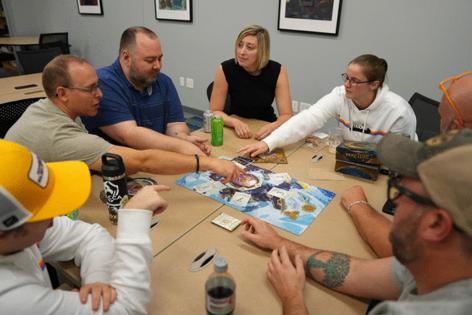


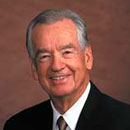


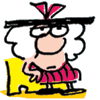

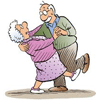
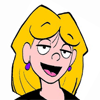
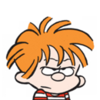
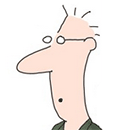
Comments